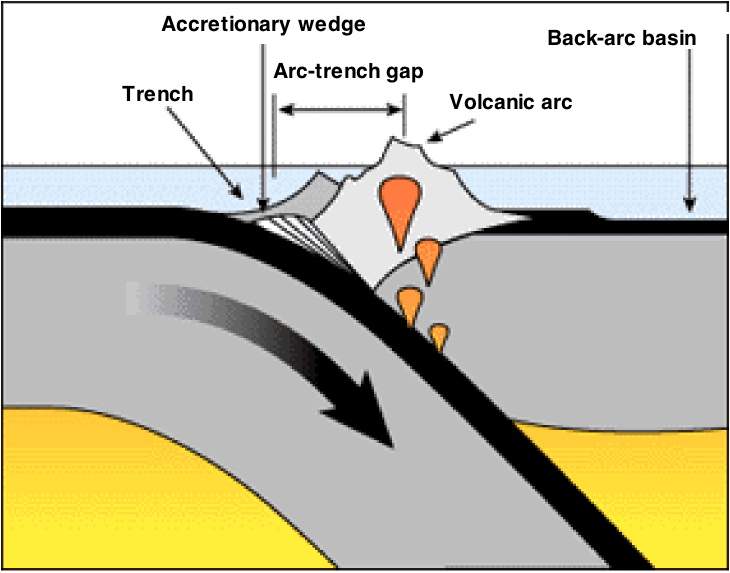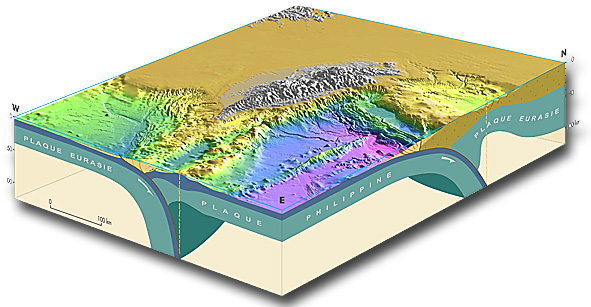| The elastic-plastic-viscous lithosphere | |||||||
| Example for lithospheric flexure at trenches - | |||||||
| Results: The elastic plate thickness is a function of the lithospheric age at the time of loading, and the elastic plate thickness measured by plate flexure at trenches is generally significantly lower than that measured from flexure due to island loads. The effective elastic plate thickness is reduced when the plate is under higher bending stresses. Implications:The elastic plate thickness is governed by an isotherm. Above this isotherm, rocks behave elastically over geological timescales when subjected to typical bending stresses associated with lithospheric flexure. Deeper than this isotherm, rocks flow like a fluid on geological timescales to relieve flexural stress. At high-T rock rheology is best described by a power-law. The trench data show little, if any age dependence, and indicate that the strength of the plate at the trench is not a function of its age/temperature. Since plates bend far more at trenches than they flex under island loads, we can intuitively expect that the plate response to these loads might be quite different. Most important results of laboratory experiements: For a given geological strain rate = 10-16 s-1 (this is far below strain rates applied in the lab), the transition between elastic and ductile behavior is not just a single isotherm (as expected from only considering seamount loading of an elastic plate). McNutt and Menard [1982] argued that this might in fact explain some of the scatter in the figure of elastic plate thickness vs. age. |
|||||||
 |
 |
||||||